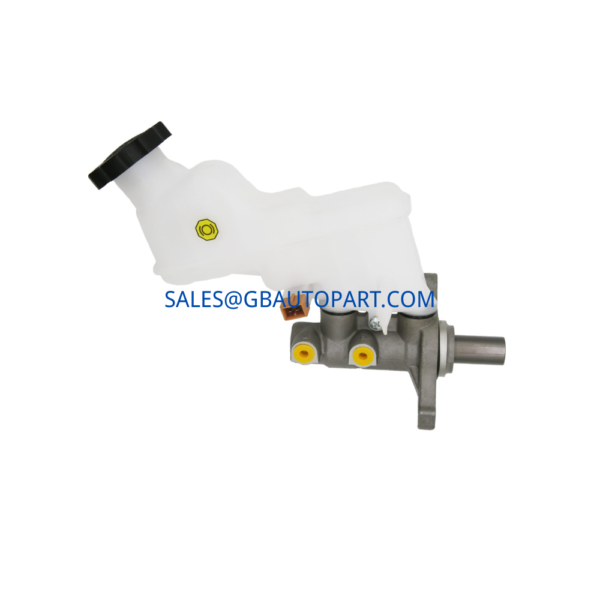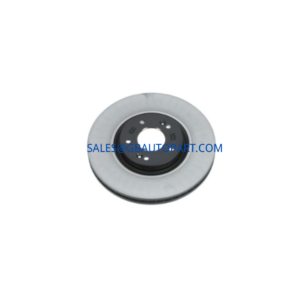
The braking system is arguably the most vital safety feature in any vehicle. While brake pads and rotors often get the spotlight, a less-visible component is actually the heart of the entire hydraulic process: the brake master cylinder. For specific vehicle models, particularly those from Kia and Hyundai, the 58510-H7300 brake master cylinder plays this crucial role. This article provides a comprehensive overview of what this component is, why it’s so important, and how to ensure you’re getting the right part for your vehicle.
What Is a Brake Master Cylinder?
To understand the importance of the 58510-H7300, it’s essential to first grasp the basic function of a master cylinder. When you press the brake pedal, you are not directly squeezing the brake pads against the rotors. Instead, you are applying mechanical force to a piston inside the master cylinder. This piston then pressurizes the brake fluid stored within the cylinder. This pressurized fluid is then sent through a series of brake lines to the calipers at each wheel, where it forces the brake pads or shoes to clamp down, creating the friction needed to slow and stop the vehicle.
The master cylinder is divided into two separate circuits, or pistons, to ensure a failsafe. One circuit typically controls the front wheels, and the other controls the rear wheels. This dual-circuit design means that if a leak or failure occurs in one circuit, the other will still be able to provide some braking force. This is a critical safety feature that protects the driver and passengers. The 58510-H7300 is designed with this very principle in mind, ensuring redundancy and safety for your vehicle’s braking system.
Key Features and Specifications of 58510-H7300

The 58510-H7300 brake master cylinder is an OEM (Original Equipment Manufacturer) part, meaning it is the exact component that was installed on the vehicle when it was first manufactured. This ensures a perfect fit and seamless integration with the car’s existing systems, especially those with ABS (Anti-lock Braking System). The quality of materials and precision engineering of an OEM part like the 58510-H7300 are typically superior to many aftermarket alternatives, which is crucial for a component that handles high-pressure fluid and is critical to safety.
Some of the key features that make the 58510-H7300 a reliable choice include:
- Precision Machining: The internal bore and piston are manufactured with tight tolerances to prevent fluid leaks and ensure consistent pressure generation.
- Durable Seals: High-quality rubber seals and gaskets are used to withstand the corrosive nature of brake fluid and the constant pressure cycles of braking.
- Material Composition: The housing is typically made from a lightweight yet strong material like aluminum, which resists rust and corrosion while effectively dissipating heat.
- Compatibility: The 58510-H7300 is specifically designed for a range of Hyundai and Kia models, ensuring it works in perfect harmony with the vehicle’s hydraulic and electronic braking systems.
When you’re searching for a replacement part, it’s essential to match the OEM part number, in this case, the 58510-H7300, to ensure the component is compatible with your vehicle’s make, model, and year. This simple step eliminates guesswork and guarantees the part will fit and function as intended.
The Importance of Quality: Why the Right Part Matters for Your Vehicle
When it comes to brake parts, compromising on quality is never a good idea. The entire braking system operates under immense pressure and heat, and every component must perform flawlessly. Using a subpar or incorrect master cylinder can have severe consequences, ranging from spongy brake pedals to complete brake failure.
A faulty master cylinder can manifest in several ways. One of the most common signs is a “spongy” or soft brake pedal that sinks slowly to the floor when pressed. This is often caused by a leak in the internal seals, allowing brake fluid to bypass the piston and lose pressure. Another indicator is a brake fluid leak around the master cylinder itself or a consistently low fluid level in the reservoir.
Choosing a genuine part like the 58510-H7300 helps you avoid these issues. It guarantees that the component meets the manufacturer’s strict safety and performance standards. While cheaper aftermarket parts may be available, they can be made with lower-quality materials that degrade faster, leading to premature failure and costly repairs down the line. A reliable master cylinder is a long-term investment in your vehicle’s safety and your peace of mind.
Understanding the Installation Process
Replacing a brake master cylinder is a complex job that requires specialized knowledge and tools. It’s not a task for a novice DIY enthusiast. The process involves:
- Safety Precautions: The car must be properly lifted and secured.
- Fluid Drainage: The old brake fluid is carefully drained from the system.
- Removal of Old Part: The master cylinder is detached from the brake booster and brake lines.
- Installation of New Part: The new 58510-H7300 is installed, and the brake lines are reconnected.
- Brake Bleeding: This is the most crucial step. The entire braking system must be bled to remove any air that entered the lines during the replacement. Air in the brake lines is a major safety hazard, as it compresses under pressure, resulting in a non-responsive brake pedal.
Because of the complexity and the critical safety implications, it is highly recommended to have this job performed by a certified mechanic. A professional has the experience and equipment to ensure the job is done correctly, from the initial installation of the 58510-H7300 to the final and critical bleeding process.
The GB Autopart Advantage: A Commitment to Quality and Safety
At GB Autopart, we are committed to providing only the highest quality automotive parts to our customers. We understand that your vehicle’s safety is non-negotiable, and that’s why we specialize in genuine and high-quality OEM replacement parts. Our inventory, which includes the 58510-H7300 brake master cylinder, is carefully curated to meet the needs of serious car enthusiasts and professional mechanics alike.
Our core philosophy is centered on offering true value. This means providing parts that are reliable, durable, and perform exactly as they were designed to. We believe in providing solutions that solve the user’s problem not just in the short term, but for the long haul. When you purchase a part like the 58510-H7300 from us, you’re not just buying a piece of metal and rubber; you are investing in your vehicle’s longevity and, most importantly, the safety of everyone who rides in it.
By focusing on quality and providing parts that are a perfect fit, we help prevent the common issues associated with poor-quality parts, saving you time, money, and stress. Our parts are sourced from trusted manufacturers, ensuring every component we sell, including the 58510-H7300, lives up to its promise.
FAQs
Q1: How do I know if my brake master cylinder is failing? A: Common signs of a failing master cylinder include a soft or spongy brake pedal, a pedal that slowly sinks to the floor, visible brake fluid leaks, or an illuminated brake warning light on your dashboard.
Q2: Can I use an aftermarket brake master cylinder instead of the 58510-H7300? A: While many aftermarket options exist, it’s highly recommended to use an OEM part like the 58510-H7300. OEM parts guarantee a perfect fit and are made to the vehicle manufacturer’s specifications, which is crucial for a safety-critical component.
Q3: How often should a brake master cylinder be replaced? A: A master cylinder typically lasts for a very long time, often over 100,000 miles or more. It is usually only replaced when it shows signs of failure or during a major brake system overhaul.
Q4: Is it safe to drive with a failing brake master cylinder? A: No, it is extremely dangerous to drive with a failing master cylinder. The performance of your brakes is severely compromised, and you risk losing your ability to stop the vehicle. If you suspect your master cylinder is faulty, you should have your vehicle towed to a professional mechanic immediately.






